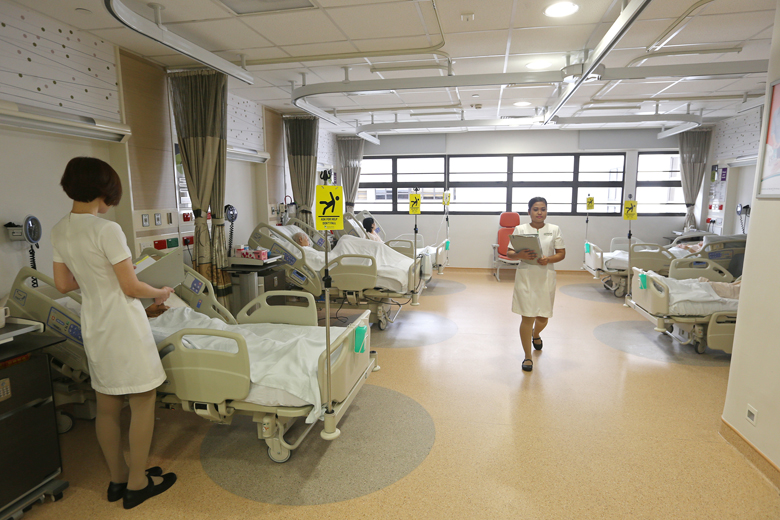Singapore has fourth highest medical inflation prospects in region
Sign up now: Get ST's newsletters delivered to your inbox

The topic of rising healthcare costs has become a hot topic in recent months, with the Health Ministry taking various steps to manage the problem.
PHOTO: ST FILE
Follow topic:
SINGAPORE - Insurers expect healthcare costs to rise more quickly in Singapore than in many other countries in the region, according to a new report from international consultancy firm Aon.
This is despite the fact that medical inflation - as based on the claims experience of the insurers surveyed - has fallen sharply since 2014.
In the report on regional healthcare trends, 11 Asian markets were each assigned a score on an index designed to reflect insurers' views on medical inflation.
Vietnam, Malaysia and Pakistan were the top three countries expected to experience significant increases in healthcare costs over the next three years.
Singapore was ranked fourth, with a score of 95.1. This was higher than the median score of 82.7, but also well below the highest scorer - Vietnam, with a score of 164.5.
South Korea scored lowest at 64.3, with Taiwan ranked just above at 71.4.
The index was "actuarially modelled on each market's 2017 and 2018 medical inflation estimates along with their three-year market inflation outlook," Aon's report said.
The topic of rising healthcare costs has become a hot topic in recent months, with the Health Ministry (MOH) taking various steps to manage the problem.
These include reinstating fee benchmarks for medical procedures and requiring new riders on Integrated Shield (IP) insurance plans to have an element of co-payment.
Two in three Singapore residents have IPs, which provide more extensive benefits than the Government's basic health insurance scheme, MediShield Life.
Earlier this year, the MOH said Singapore's average annual healthcare inflation rate was 2.4 per cent between 2011 and 2016.
According to Aon's report, healthcare inflation fell from 20 per cent in 2014 to 9.6 per cent last year. These figures were based on claims received by the insurance firms it surveyed.
Insurers said inpatient costs were the main driver of medical inflation, and pinpointed medical fees as making up the largest component of inpatient costs.
At the outpatient level, they highlighted both diagnostic procedures and medical fees as being the largest contributor to costs.
"Private healthcare systems work best in tandem with vibrant public systems, as we've seen in markets such as... Singapore, which has effectively halved its medical inflation rate over recent years," said Mr Tim Dwyer, who is chief executive of health and benefits, Asia Pacific, at Aon.
"This is due to the concerted cost management efforts of consumers, healthcare providers, and medical insurers that provide effective management of the outpatient claims experience."

